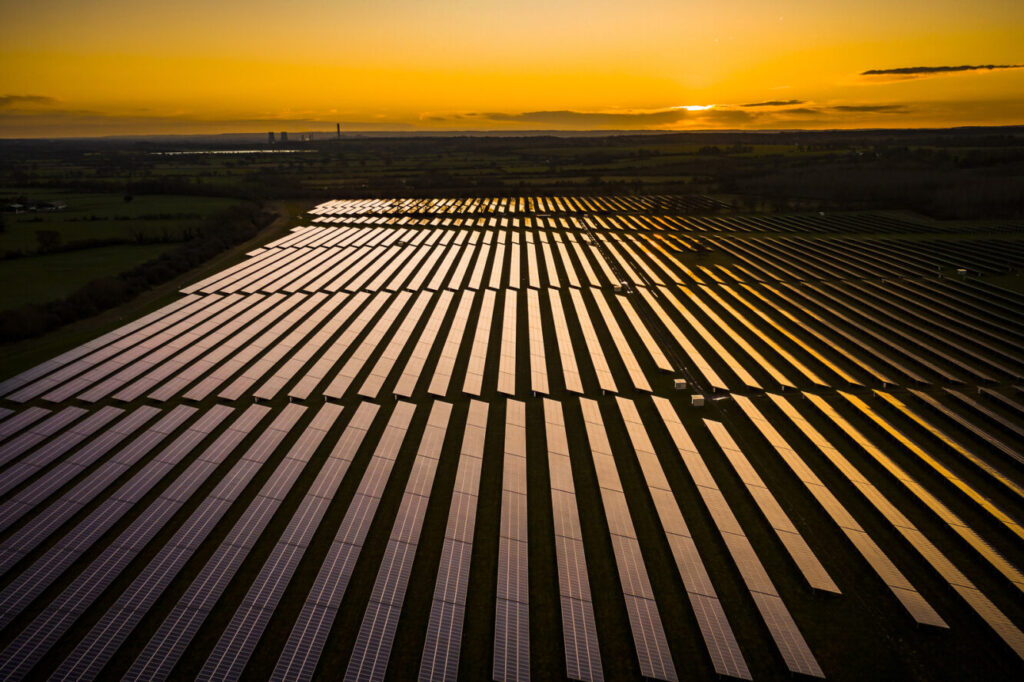Trump’s rule change kills GOP budget surety on renewables
Renewables sector insiders saw their hopes for a more predictable post-GOP budget climate dashed this week by renewed uncertainty over how eligibility for sunsetting wind and solar incentives will be determined.
As renewables investors and project sponsors watched Congressional Republicans haggle over how hard to swing the hammer at the sector in their massive reconciliation bill, many found solace in the expectation that passage of the legislation would at least bring certainty to the market.
That confidence, however, proved to be unfounded for the wind and solar sectors, as President Donald Trump on Monday issued an executive order directing the Treasury Department to revisit guidance for determining when a project has started construction for the purposes of qualifying for Clean Energy credits now scheduled to sunset at the end of 2027.
Provisions for sunsetting renewable energy credits for solar and wind projects in the GOP budget bill, titled the One Big Beautiful Bill (OBBB), started the clock running on a one-year safe harbor period for projects to start construction and lock in credit eligibility the minute President Trump signed the bill into law last Friday, 4 July. But Trump’s executive order, directing a review of the safe harbor provisions just three days later, laid down a significant barrier to project sponsors hoping to act quickly on the new policy landscape.
Ready, set… wait!
A number of industry insiders told Infralogic in the leadup to passage of the OBBB they expected a flurry of financing activity for renewables once the bill was signed into law, with developers racing to safe harbor projects eligible for clean energy tax credits and deals that had been stalled over policy uncertainty beginning to move forward.
But that activity could be slated for a false start, as the industry awaits the results of a 45-day Treasury review of the budget bill’s safe harbor provisions that allow solar and wind to qualify for the full pre-OBBB value of tax credits if they start construction within 12 months, experts said.
Caitlin Lawrence, a partner with Vinson & Elkins finance practice, told Infralogic that clients who had been awaiting certainty from passage of the budget bill to execute transactions are now deliberating over how to respond to the order.
“Though the bill provided some brief clarity, the executive order issued at the beginning of the week has created additional uncertainty in the market,” she said. “We continue to have frequent conversations with clients about what to do while we all wait for additional details on what will come out of Treasury based on the executive order.”
Under longstanding Treasury guidance, developers may establish that construction has begun on a project by showing that “physical work of a significant nature” has been carried out, or that 5% of the total cost of the project has been deployed.
But uncertainty over what changes Treasury might implement in order to meet President Trump’s mandate of “restricting the use of broad safe harbors unless a substantial portion of a subject facility has been built” could prevent project owners from executing plans intended to safe harbor projects, said Don Dimitrievich, senior managing director for energy infrastructure credit at Nuveen.
“This new executive order may chill capital investment until we get clarity on what changes the Treasury Department may make to the construction safe harbor,” he said.
Dimitrievich said he had dozens of discussions, as the GOP bill advanced through Congress, with developers who were looking to safe harbor projects.
“There’s clearly a rush to lock that in,” he said.
Ambiguity
A number of experts who spoke to Infralogic said the language of Trump’s executive order makes it difficult to anticipate what the outcome will be.
The order, for example, directs Treasury to “ensure that policies concerning ‘beginning of construction’ are not circumvented.” That could plausibly be interpreted to mean the status quo will be largely upheld, perhaps with more clear guidelines. But a more maximalist reading could lead to a much more onerous enforcement regime.
“Nobody’s quite sure of what to make of it,” said Elias Hinckley, a partner with Baker Botts who focuses on energy, tax, and finance matters.
“That could be nothing but rehashing the existing rules, it could be a major change,” he added.
Kevin Smith, CEO at Arevon, also noted the ambiguity of the order, saying it’s possible Treasury could respond with minor changes aimed at clarifying enforcement. But a move toward more restrictive guidelines could hinder project development and have significant implications for US electricity supply down the road.
A more aggressive approach by Treasury to the safe harbor guidance could lead lenders and tax equity investors to step down activity, particularly on projects and portfolios that are harder to square with tax credit support under the terms of OBBB and don’t have well-capitalized backing, Smith said.
Meanwhile, the uncertainty itself creates a significant challenge, said Smith, since it cuts into the already limited amount of time developers have to safe harbor and start construction on projects.
Grave expectations
The order to rein in safe harbor guidance appears to be an attempt by the Trump administration to make good on a promise to GOP holdouts in order to win their votes on the budget bill.
South Carolina Republican Ralph Norman, a member of the arch conservative House Freedom Caucus, said in public statements that Trump pledged to limit access to clean energy credits, even beyond the provisions of the budget bill, in part by applying enhanced scrutiny to efforts to safe harbor projects.
That promise to clamp down on safe harboring comes on top of a budget bill that, on its own, represented a stark change for the worse in terms of policy and federal financial support.
Arevon’s Smith said the law’s provisions cutting off tax credits for wind and solar projects after the end of 2027 only serve to exacerbate the US energy sector’s two greatest concerns for the coming years, which he said are energy prices and electricity supply.
The legislation, he said, injects uncertainty and volatility into the market at a time when electricity demand in the country is expected to rise substantially. Meanwhile, the chilling effect on solar and wind investment, and project failures stemming from the law, could lead to capacity shortfalls in the coming years, he added.
“You’re going to see volatility in the market, and there will be some projects, both electricity generation and new manufacturing, that fall away,” he said.











